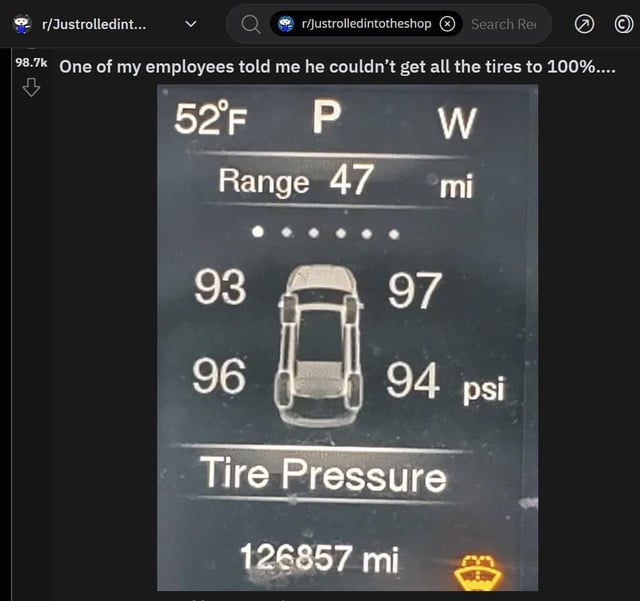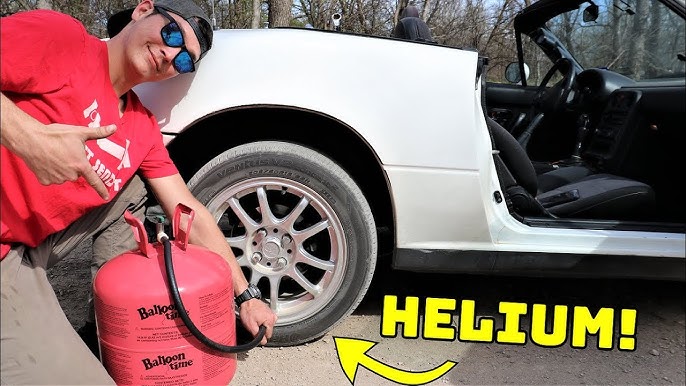So last month, I kept seeing posts and forum threads claiming that filling your car tires with helium instead of regular air could boost your gas mileage. Sounded kinda wild to me, but hey, I love testing stuff like this. Figured why not give it a shot and see what happens? Had to know if it was real or just another internet myth.

Getting the Stuff & Gearing Up
First things first, I needed helium. Raced down to my local party supply store – yeah, the place that sells balloons and silly string. Grabbed two big tanks of that balloon-grade helium. Felt a bit ridiculous, honestly. Also dug out my trusty tire pressure gauge and rented a tire inflation attachment kit because my regular air chuck wouldn’t work. Wanted to keep things fair, y’know?
Prepping the Car
Before messing with helium, I needed a baseline. My sedan was running on plain old air like always. Filled all four tires to exactly the pressure recommended in the manual – 35 PSI. Checked it twice to be sure. Then, I drove my usual commute for a full week, filling up at the same pump each time, same time of day. Tracked every single mile and every gallon pumped.
- Baseline MPG: Calculated it out – averaged about 28.5 miles per gallon that week. Solid number to compare against.
The Helium Swap – The Messy Part
Time for the helium fun. Parked in my driveway, grabbed the first tank and hooked up the inflation kit. Let me tell ya, it was trickier than I thought! The helium tank felt lighter but awkward to handle. I had to completely deflate each tire first – whoosh! – then slowly filled each one back up with helium, watching the pressure gauge creep up to that same 35 PSI. It took forever with those little tanks, and fitting the hose onto the valve felt clumsy. Spilled a bit here and there – heard that weird high-pitched leaking sound helium makes. Felt kinda dumb wobbling the car around to make sure the helium spread inside the tires. Job done? Okay.
Running the Helium Test
Another week, same routine. Drove the exact same routes – work commute, grocery store, kids’ soccer practice. Tried to drive the same way too, no sudden speeding or hard braking. Kept religiously tracking the odometer and gas pumped. Filled up at that same pump, same time, feeling like a weirdo fiddling with the tanks in my trunk between fills.
- Helium Week Observations: Honestly? Felt zero difference driving. No smoother ride, no magic floatiness. Felt exactly the same as driving on air.
Crunching the Numbers & The Big Letdown
After the second week, sat down with my notebook and calculator. Added up all the miles driven on helium: roughly the same distance as the baseline week. Added up all the gas used… and my heart sank.

- Helium MPG Average: 28.2 miles per gallon.
Seriously? It was actually slightly worse than my baseline week! Less than half a mile per gallon drop, but definitely not an improvement. Checked my math twice, three times. Nope. Filled with regular air again immediately.
So, What’s the Deal?
Waste of time and money? Looks like it. Balloon helium ain’t cheap, and lugging those tanks around was a pain. My little experiment showed no fuel savings whatsoever. In fact, it might have hurt my mileage a tiny bit. Seems like the science backs this up too – helium molecules are smaller and leak out faster than regular air molecules (mostly nitrogen and oxygen). That means pressure drops quicker, potentially leading to lower tire pressure faster, which absolutely hurts gas mileage. Messing around with renting gear and buying gas-station air to top off properly kinda defeats the whole “saving fuel” point anyway!
Final Verdict? Skip the helium tanks. Stick with plain old compressed air (which is mostly nitrogen anyway!), keep your tires at the right pressure consistently, and get your tires rotated on schedule. That’s the real way to save gas. Helium in tires? Total myth. Happy I tested it though – sometimes you just gotta see for yourself!
